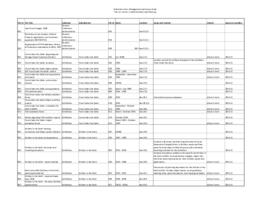Series includes records created, received, and/or set aside by Pam Brown and her predecessor Anne-Marie Fenger in the course of their duties as supervisors of the Native Youth Programme (NYP, also called the Native Youth Project). Since 1999 Pam Brown has supervised the Native Youth Programme (NYP, formerly called the Native Youth Project), which aims to provide First Nations high school students with the opportunity to gain leadership and public speaking skills through a season of full-time employment as cultural interpreters at MOA. Brown’s responsibilities as NYP supervisor include securing funding for the employment of a program coordinator and six students and overseeing their training. The NYP was originally founded in 1979 by MOA curator Madeline Bronsdon-Rowan, who served as the program’s first supervisor. Bronsdon-Rowan retired in 1987 and was succeeded by Anne-Marie Fenger, whose records Brown subsequently inherited.
The records in this series document the organization and administration of the Native Youth Programme and the functions and activities of the NYP supervisor, including: student worker recruitment and training, educational programs and presentations, grants and funding, public events (including fundraising), field trips, publicity, and conference planning.
Records in this series include correspondence, memoranda, reports, press clippings, grant applications, press releases, schedules, liability waivers, study trip itineraries, public comment books, student assignments, scripts for student presentations, photographs, and audio recordings.

